The scenery on this last leg was absolutely breathtaking. It’s almost impossible to describe how lush and verdant the terrain was. The mix of fields, mountains, trees, and profusion of flowers make it jaw-dropingly spectacular. For me, Claudio, and the guys in the SRzero, there was a bit more to contend with as not only did we have rain, (the first real rain since Colombia) but it was bloody cold. We had all kinds of layers on to help ward off the chill, but it wasn’t working
And at last, there it was, the white and blue flag of Argentina waving in the wind. Since I was eight years old, I had wanted to visit this country, and 21 years later, I rode my motorcycle to it. It was the hot summer of 1990 when the Argentine national football team lost the final World Cup match to Germany, and I cried for two days. I wanted to be a football player, but it turned out that life had a different path in mind for me.
Upon our arrival at the border, the bike was completely out gas. Trying to get gas from the van was a no-go as it had an anti-robbing screen in the way. A kindly policeman came to my rescue who went out to town and got some gas for us. Finally the stern Nazi-like Chilean police had given way to helpful and laidback Latino police we came to know.
As soon as we entered Argentina, we came across patches of snow much to Claudio’s great delight. He wished only for two things on the last leg of the film as we had pretty much seen everything else in the long journey: snow and penguins. As it turned out, he would never get to see the penguins, but at least snow was better than nothing. As we got higher into the mountains, the snow covered the landscape and the freezing rain turned into ice. The weather was blustery and cold in earnest, and we were relieved to enter Bariloche and settle into a cozy chalet with heating (a novelty in these parts). The host was incredibly accommodating to our every request, including parking the bike on the covered balcony by our room
The next day dawned bright and sunny although it was still bitingly cold outside. Then it changed again. In the space of a few minutes it rained, snowed, and hailed. Cynthia and Claudio braved the elements for a walk to the beautiful lake to film and take pictures, elated that we weren’t leaving until 2 pm. Our next stop was Esquel, a beautiful ski town in the foot hills of the Andes, and that marked our entry into the Province of Chubut, the start of the Patagonia. I didn’t get a minute of sleep that night as two busloads of high school rugby players checked in the hotel the night before and kept us up all night with their rowdy antics. I was so tired that the thought of driving 400 miles was out of the question. Paul Jackson, Claudio’s film editor, took on the task of riding, and I slept in the van the whole time. All I remember is peeking out of the dusty van windows between naps and seeing millions of sheep scattered all over Patagonian landscape.
The Patagonia has a peculiar landscape. It has so many living things in it that makes it so alive. From flamingos, armadillos, deer, sheep, guanaco, (wild lama) and ostriches to of course cows, it is home to giant glaciers, formidable mountains, and barren deserts. It has some of the most extreme temperatures from minus 30F in winter to 100F in summer. To add to that are the freakish winds which blow in the summer at such vicious velocities that it makes the locals wish for the freezing but calm winters.
The next day proffered a bizarre scene from a horror movie. Millions of grasshoppers covered the road as we left tire tracks on their corpses. The motorcycle engine was covered with torn off legs and heads, and it smelled like a bakery as they sizzled on the hot engine. As we caught up with the rest of the group, we found the electric car being pulled out of a ditch. The SRzero had spun off road trying to avoid a large pothole and broken two shock absorbers. A three hour roadside wrenching party started, and a guacho came by on horseback with his dogs from his hillside home to see if we were ok. Luckily we had spare shocks, and replaced the broken ones and got back on the road to finally enter Tierra del Fuego.
Tierra del Fuego is an island, and that’s where Ushuaia is located. To reach it, large ferries are used to cross the Strait of Magellan, which can haul pretty much anything, and that’s the only way of getting in and out besides flying. Tierra del Fuego is also co-owned by Chile and Argentina, which means you have to cross into Chile again and back to Argentina 100 miles later. The no-man’s-land is heavily protected with mine fields and barbwires as Argentina and Chile have a long dispute over these parts. Argentines are not too fond of Chileans and vice versa, and it’s apparent everywhere you go. To give the Argentines credit, they are warmer people than their aristocratic neighbors. Besides, they make one hell of Asado (Argentine-style BBQ) which is hard to beat. Argentina is a meat lover’s paradise.
For the first time in the long journey down, I took a turn riding in the SRzero for a ride to Rio Gallegos. I rode my bike inches from it for thousands of miles, but now for the first time, I truly got to appreciate its powers and smoothness in that 200km ride. The SRzero is an electric car with no internal combustion engine. It makes no noise, no pollution, has 400+ horsepower, sits 2 inches from the ground, it’s pretty and holy crap, it’s fast. Unlike gas engines, all the power is available at a split second at all time, and it takes off like a rocket the second the accelerator is down. It was a fun drive to Rio Gallegos, but as my bad luck would have it, the bike broke down soon after we started out in the middle of nowhere while Claudio and Cynthia were riding it. We had long passed them not realizing they had broken down, so it took hours for them to find us at our destination as they had a hard time flagging someone down amidst the ostriches and guanacos to help them get the bike started.
The stator was fried and with our deadline closing in, I had to fix it fast. I ruled out spending time to find a replacement for it as I quickly learned that parts for this bike are almost non-existence in South America. That left me with the only option: rewinding it. The entire next day, which happened to be Cynthia’s birthday, found me and Cynthia in a shop trying to fix the stator while the rest of the team went out to enjoy a day at a sheep ranch owned by the Sanchez family, our new friends. The guy who did the work wound the coils wrong on his first try, so he had to do it again. Wrong again. At 10 pm, after three tries he said that he’ll fix it the next morning, but we had to leave the next day at 7:30 a.m. and that wasn’t an option. I asked him if he would let me do it in his shop (the bike was torn apart there) and he amazingly agreed. He gave us the key to his shop (total strangers), and he even came back himself after midnight to help some more. By the time we redid the coils and got it working it was already 4 am. That left us with two hours of sleep and on the road again for Rio Grande, the home to Malvinas heroes (or as the English call them: Falkland Islands intruders) our last stop before Ushuaia. But I didn’t care. We were so close to the end that it was hard to sleep anyway. We even made it to our meeting place at the appointed time a full half hour ahead of the RGE team.
The Racing Green Team would finish their long journey in Ushuaia, the southern tip of Argentina and also the southernmost city in the world. From there, I would spend some more time enjoying Argentina with Cynthia on our own before she went home and then resume the rest of the journey as a One-Man-Band again. The days were numbering and with only 2 days to go to Ushuaia, it almost didn’t feel real. We had traveled together from México to the end of the world, and with all its ups and downs, it was a fantastic experience. I got to learn many things from Claudio on professional videography, and numerous film editing tips and tricks watching Paul do what he does best. And most importantly, I got to share it with the amazing Cynthia.
Although Cynthia joined the expedition in California, she played a tremendously invaluable role in starting out our budding non-profit organization, and was a diligent expedition partner throughout the journey. She never once complained in any kind of riding or weather conditions, woke up early and went to bed late. She dried my clothes with a hair blow dryer in tropical rains of Central America, stood by my side anytime something went wrong, took amazing pictures to document the journey, coordinated our visits to clinics and poor neighborhoods, constantly translated for me, went out of her way to fix anything and everything she could, and she gave more than I could give. The decision to part was not easy to say the least, but it was necessary for the completion of this expedition, even though she may not think so. This could be a decision that I will regret for many years, but it was the right thing to do for me and the expedition. She will still be actively involved in the organization, and I know that if I ever need something, I can always count her, no matter what. She will be missed dearly.
The odometer is clicking fast and Ushuaia is only a rock-throw away and with that, I covered 120 degrees of latitude on an ancient motorcycle from the Arctic to Equator to Antarctic. We made it to the end of the world.

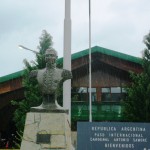
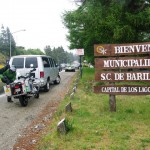
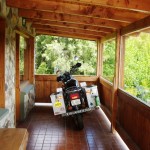

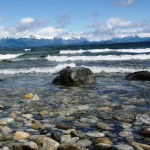
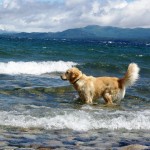
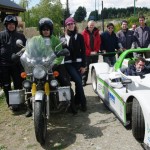
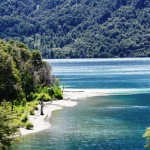
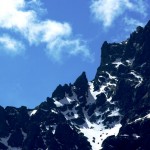
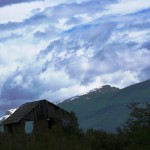
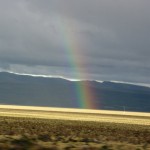
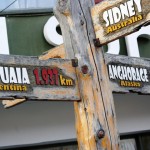
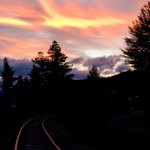
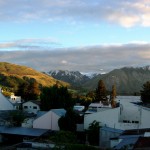
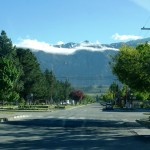
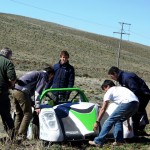
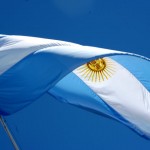
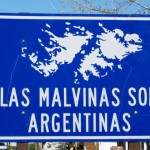
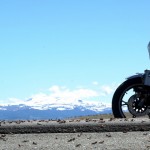
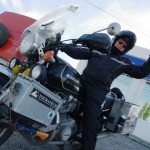
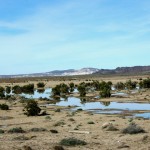

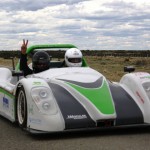
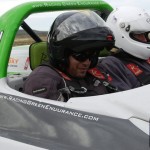
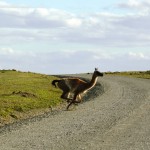
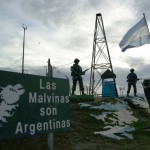
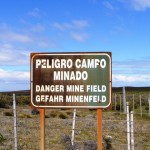
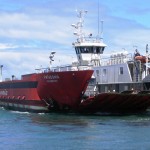
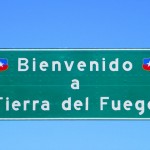
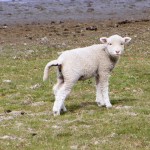

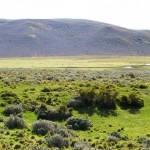
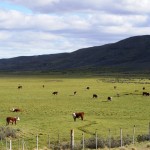
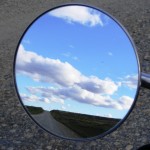
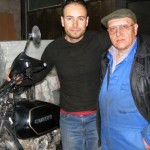
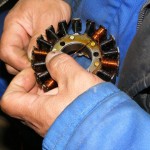

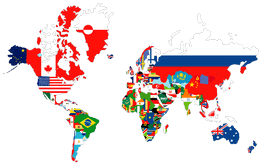
Great read well done to all involved
Chris (omid) I think you are unfaithful. That is all.